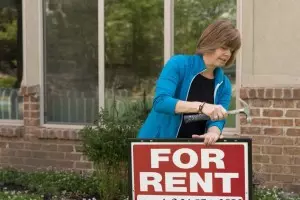Drawbacks of Rent Control Legislation
 As demand for rental properties has grown and the pace of new housing construction has slowed since the housing bust, rental rates have grown faster than the rate of inflation. This has motivated some to call for government-mandated rent controls as a way to “fix” the problem. Research shows that the three key factors that determine rental rates are the number of jobs, the number of wages, and the amount of available housing in a market. The best way to put a lid on rental rates is to have the housing supply keep pace with market income and job growth. But doing so is complicated because it requires changes to local zoning regulations and building codes. It is easier for politicians and activists to go for a quick “fix” by limiting rental rates on existing housing.
As demand for rental properties has grown and the pace of new housing construction has slowed since the housing bust, rental rates have grown faster than the rate of inflation. This has motivated some to call for government-mandated rent controls as a way to “fix” the problem. Research shows that the three key factors that determine rental rates are the number of jobs, the number of wages, and the amount of available housing in a market. The best way to put a lid on rental rates is to have the housing supply keep pace with market income and job growth. But doing so is complicated because it requires changes to local zoning regulations and building codes. It is easier for politicians and activists to go for a quick “fix” by limiting rental rates on existing housing.
Despite having good intentions, rent control legislation fails and has resulted in unintended negative consequences that make housing situations worse. The primary unintended consequences that rent control legislation has induced include housing supply reduction, housing quality deterioration, and home value decline. The reduction of housing supply is an outcome of controlled rent. In fact, a 1981 study concluded that rent control caused a decrease in the housing unit supply. Because of the said restriction, businessmen chose not to invest their capital in locations that impose rent control, thus significantly lessening the construction of residential housing units. Aside from reduced housing construction, the Ellis Act in California permits landlords to permanently withdraw their rental units from the market. As a result, tenants have fewer options in finding houses to rent.
Another consequence brought about by rent control is the decreased quality of existing residential homes as reported in a study by the Federal Reserve Bank of Richmond. Since profit is curbed, money used for the maintenance and repair of rental housing units is reduced. Consequently, low-quality maintenance takes place, most likely causing housing deterioration in the long run. The same is true if tenants leave or are evicted from a rent-controlled establishment. Without tenants, landlords do not earn the income to maintain and repair unless a new tenant occupies that empty residential area. Much worse, if any residential property remains uninhabited for a longer period, abandonment is most likely to ensure which leads to the same route – deterioration of existing housing.
The market value of residential properties is also negatively affected by rent control regulations as reported by the National Multifamily Housing Council. Once residential establishments become rent controlled, their market value absolutely decreases depending upon the inflation of property values in markets that are not regulated. And lower property values lead to lower local tax income which leads to reduced city services, and a spiral of negative side effects. Tenants being affected by rising rental rates and affordability issues should force legislators and city officials to deal with the underlying problem and not seek quick “fixes” that will only make matters worse in the long run. The long term solution is to increase the housing supply.
We are pledged to the letter and spirit of U.S. policy for the achievement of equal housing opportunity throughout the Nation. See Equal Housing Opportunity Statement for more information.
Get the Neighborly App
In addition to Real Property Management's expert skills in managing your rental property, you can utilize Neighborly's other brands to maintain and enhance your home. Use the Neighborly App to get connected to local home service professionals. Download and receive offers only available on the App.
Depending on current health and safety regulations in your area, some of the services mentioned in this post may not be available. Neighborly service providers will follow the latest health and safety guidelines provided by the local and state governments. Please check with your local Neighborly service provider for details at the time you need service(s).






